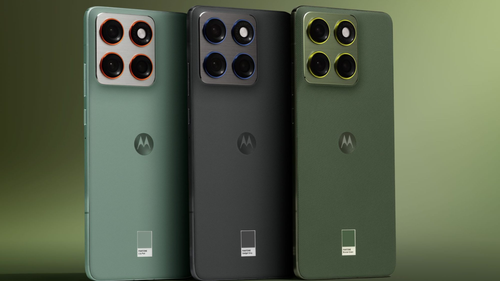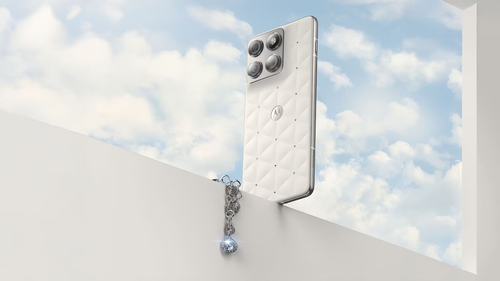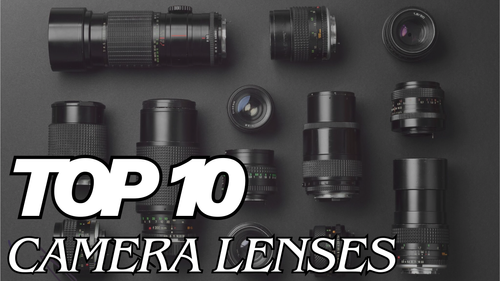Ad
Articles
Why QLED TV’s is better then Regular LED TV’s IN 2025

With the Changing times there are so many new advancements in every sector, why keep your TV boring? A QLED TV will surely enhance your movie experience at home. It comes with advanced quantum dot technology, which makes QLED TVs colors burst with vivid intensity. Whether it’s the bright reds of a sunset or the deep blues of the ocean, QLED screens display colors far richer and more accurate than a standard LED TV ever can. While regular LED TVs remain widely available and affordable, QLED technology has set a new benchmark for visual performance, durability, and versatility. Here’s an in-depth look at why QLED is the superior choice for home entertainment this year.
Let’s know the basics of LED vs. QLED.
Both regular LED and QLED TVs are based on LCD panels illuminated by LED backlights. The crucial difference is that QLED TVs include a layer of quantum dots, a technology that fundamentally transforms how colors and brightness are delivered on screen. This quantum dot layer makes the difference between the LED vs. QLED.
Key Advantages of QLED Over Regular LED
1. Quantum Dot Technology for Superior Color
QLED TVs come with quantum dots to produce a much wider and more accurate color range than LED TVs. In 2025, They also support up to 94% DCI-P3 which is a standard set mark for digital theaters at calibri and border on cinema.
- In QLED TVs, Shades of green turn lush and vibrant instead of faded.
- Red looks red, not orange.
- Subtle color gradations are preserved, making movies, sports, and programs visually stunning.
- In contrast, regular LED TVs can appear faded or washed out, especially when displaying complex or highly saturated scenes.
- Every shade is portrayed accurately ensuring movies, animations and even mundane stuff like cooking become as lively as it is intended.
2. Exceptional Brightness for Any Environment
QLED TVs offer the best brightness because of the HDR and Quantum Dot technologies which enhance the image clearly without losing detail. At Home, the natural light makes the LED TVs dull, whereas QLED TVs retain amazing brightness even during the day.
- Maintain vivid, clear images even in direct sunlight or brightly lit spaces.
- No need to close the curtains to get a good watching experience.
- Regular LED TVs often struggle in bright environments, leading to dull or washed-out visuals.
- Great for shows or cricket matches in the daytime.
3. Enhanced Contrast and Local Dimming
While LED TVs rely on a backlight that can’t be fully turned off in specific areas, QLEDs often include advanced local dimming features. This allows parts of the screen to be dimmed independently, improving contrast and delivering deeper blacks compared to standard LEDs Although OLED still leads in perfect black levels, QLED’s improvements are significant for most users. Its increased ability to enjoy thrillers, Horror, or any nighttime action films turns into a far richer experience that you can't experience in an ordinary LED TV.
- Blacker blacks without greyness.
- Shaper light and dark contrast.
- Reduced picture quality in low light.
4. Consistent Viewing Angles
QLED TVs have made strides in providing consistent color and brightness across wider viewing angles. This is a notable improvement over traditional LED TVs, which often lose color accuracy and brightness when viewed from the side. For families or group viewing, QLED ensures everyone enjoys the same high-quality picture.
5. Longer Lifespan and Durability
QLED TVs use inorganic quantum dots, making them less prone to issues like color degradation or burn-in that can affect other technologies. QLEDs use inorganic materials, which make QLEDs better suited for Indian households where the TV remains on for many hours during the day. Stable quality of the picture even after years of use and continuous daily viewing. No change in color quality with the aging of the TV.
6. Better Eye Comfort
Many QLED TVs in 2025 are designed to emit less blue light, reducing eye strain during long viewing sessions which is very useful for: Children engaged in cartoons for long periods of time. Elderly viewers engaged in watching serials every single evening. Less stress on eyes, allows everyone to enjoy the content comfortably and for extended hours.
QLED vs. LED: Feature Comparison
| Feature | QLED TV (2025) | Regular LED TV |
|---|---|---|
| Color Range | Very wide (up to 94% DCI-P3) | Moderate |
| Brightness | High, suitable for daylight | Medium, can appear dull |
| Contrast | Improved with local dimming | Limited, blacks less deep |
| Viewing Angles | Consistent, wide | Limited, color shifts |
| Lifespan | Long-lasting, stable colors | Moderate |
| Eye Comfort | Low blue light, less strain | Standard |
| Best Use Cases | Streaming, sports, group viewing | Basic TV use |
Adaptability to Indian Homes and Lifestyles
Indian households often have living rooms with large windows and variable lighting. QLED’s high brightness and color consistency mean you can enjoy cricket matches, movies, or cooking shows at any time of day without worrying about glare or faded images. The technology’s durability also makes it a smart long-term investment, minimizing the need for repairs or replacements.
Conclusion
By upgrading to a QLED TV in 2025 offers a significant enhancement to your home entertainment experience. With advanced quantum dot technology, QLED TVs deliver vibrant colors, deep blacks, and exceptional brightness, ensuring stunning visuals even in well-lit rooms. Their superior contrast ratios, wide viewing angles, and long lifespan make them a durable and reliable choice for families. Additionally, QLED TVs are designed to reduce eye strain, providing comfortable viewing for extended periods. Whether you're watching movies, sports, or gaming, a QLED TV ensures a cinematic experience right in your living room.
Follow Us:
Ad
Recent News

Motorola Edge 70 India Launch Date Announced: Triple 50MP Cameras, Slim Design, and More
08-Dec-2025 09:27 AM

Google Launches Gemini 3 Deep Think: New AI Tool for Smarter Thinking Now Available to Premium Users
08-Dec-2025 06:08 AM

Realme Narzo 90 Series Teased for India Launch: What We Know About the Upcoming Smartphones
05-Dec-2025 09:49 AM

Motorola Edge 70 Swarovski Edition Launch: Features, Specs, Price, and Availability
05-Dec-2025 06:40 AM

Realme Watch 5 Launches in India: AMOLED Display, Long Battery
04-Dec-2025 11:32 AM
Reviews & Guides
View All

Realme P4x 5G Review: Budget-Friendly Beast with Epic Battery Life

Sony BRAVIA 7 Mini LED K-65XR70 vs. Haier Mini LED H65M95EUX

Samsung QN90F (65QN90FAU) Review: The King of Bright-Room Viewing

LG QNED92: The QNED Powerhouse That's More Than a Bright Alternative

Why doesn’t Apple reveal the iPhone battery in advertisements?

Donald Trump Watch Collection: Timeless Luxury on the Wrist

Best 5 Litre Water Heaters in India 2025: Top Latest Models for Quick Hot Water

Top 10 camera lenses you should Own in 2025
Ad
Latest Mobiles In India
Ad
Ad











